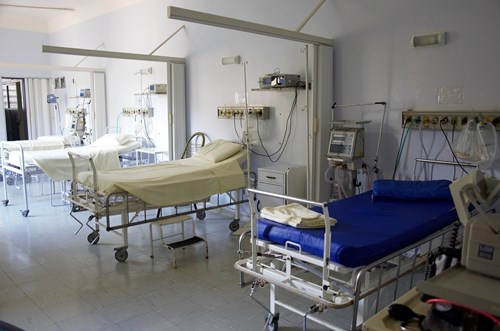RISE looks at recent headlines concerning social determinants of health (SDoH).

Community health workers found to reduce hospital readmissions
Pairing hospital patients with community health workers (CHWs) can reduce preventable hospital readmissions, particularly when patients are discharged to short-term rehabilitation rather than sent directly home, according to a recent study published by JAMA Network Open.
The study, which included 550 patients hospitalized between April 2017 through March 2019, aimed to explore whether the interventions of CHWs with inpatient adults insured by accountable care organizations (ACOs) would lower 30-day hospital readmissions. Patients involved in the study were hospitalized an average of three times in the 12 months leading up to the clinical trial.
Researchers found the intervention of CHWs to have a significant impact, with 12.6 percent of patients paired with CHWs readmitted within 30 days of discharge compared to the 24.5 percent who did not have the assistance of a CHW. Patients paired with CHWs also had fewer missed appointments.
Common CHW-patient interactions included counseling to reinforce adherence, psychosocial support, and wide-ranging assistance such as scheduling appointments, securing food or housing, accessing medications, and planning transportation.
“As US health care organizations continue to adopt ACO models with the goal of achieving higher quality care at lower costs, policies supporting insurance-based reimbursement for CHW care and investment in comprehensive training and integration of CHWs as valued members of patient care teams will continue to be critical,” wrote study authors.
New analysis identifies most and least racially inclusive hospitals
The Lown Institute Hospitals Index released Tuesday the first ranking to examine racial inclusivity among 3,200 U.S. hospitals. A key finding: Some of the most and least racially inclusive hospitals are in the same neighborhood.
To analyze how each hospital served people of color in their community, the Lown Institute, a health care think tank, used Medicare claims from 2018 as well as the U.S. Census Bureau’s American Community Survey from 2018. Each hospital was assigned a racial inclusivity score based on the demographics of the hospital’s community compared to their patient population.
Other takeaways from the report include:
- In the top 50 most inclusive hospitals, 61 percent of patients were people of color compared to 17 percent at the 50 least inclusive hospitals
- Many “elite” hospitals ranked poorly on racial inclusivity, with 11 hospitals among the 20 US News Honor Roll hospitals ranking in the bottom third for racial inclusivity and just five hospitals ranked in the top third
- The three most racially inclusive hospitals are Metropolitan Hospital Center in New York, Boston Medical Center in Massachusetts, and St. Charles Madras in Oregon
- The three least racially inclusive hospitals are Methodist Hospital South in Texas, Norwood Hospital in Massachusetts, and Adventist Hinsdale Hospital in Illinois
- The five leading cities with the most segregated hospital systems (at least 40 percent of their hospitals fall in the most or least inclusive rankings) include Albuquerque, Atlanta, Baltimore, Boston, and Chicago
“The difference between the most and least inclusive hospitals is stark, especially when they are blocks away from each other,” said Vikas Saini, M.D., president of the Lown Institute, in an announcement about the rankings. “As the nation reckons with racial injustice, we cannot overlook our health system. Hospital leaders have a responsibility to better serve people of color and create a more equitable future.”
New report ranks healthiest states in 2020
Massachusetts is the healthiest state in the country, according to Sharecare’s Community Well-Being Index released this week. The 2020 State Ranking Report marks the first #1 ranking for Massachusetts. Hawaii, which ranked #2 in 2020, previously held the top ranking for years. Other top-ranking states include New Jersey, Maryland, and New York. For the second year in a row, Mississippi has ranked last. Other states ranked at the bottom of the list are Arkansas, New Mexico, West Virginia, and Kentucky.
Using over 450,000 surveys collected in 2020 and a study of more than 600 elements of SDoH, the Community Well-Being Index assessed health risks across 10 key areas within individual well-being and SDoH:
Individual well-being
- Physical health
- Financial security
- Social life
- Community
- Purpose
SDoH
- Health care access
- Food access
- Resource access (libraries, churches, senior employment, etc.)
- Housing and transportation
- Economic security (employment, insurance)
Trends identified in 2020 across the country include a national decline in financial well-being, national resilience in the physical well-being domain, and improvements across community, purpose, and social well-being.
The report recommends four best practices for community well-being impact:
- Assess risk factors within your community and establish partnerships around a common goal.
- Provide the necessary resources for individuals to improve their well-being.
- Build community programs to promote an active lifestyle and healthy transformation.
- Measure the economic impact of all community interventions.


